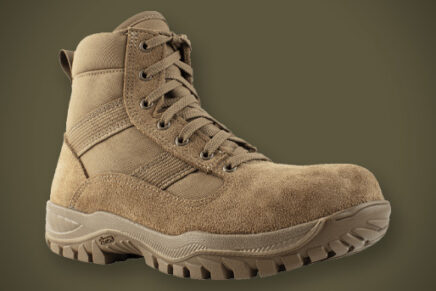
Garmin brand treats Fenix 3 watch as its premium product. Here they have combined all the necessary, useful and modern functions for employment in almost any conditions. Garmin Fenix 3 is like a locomotive that’s driving the line of sport and multisport watches by Garmin, and it slowly transforms into the category "can do anything, almost coffee brewing". So, let’s find out who this gadget is meant for and if the state of matters is really so rosy.
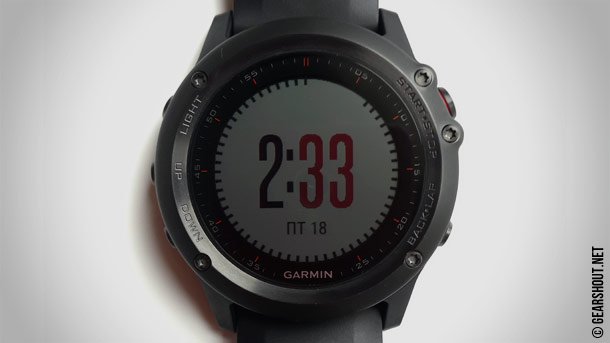
The third version of Garmin Fenix, which was exposed early this year, functionally has improved far more after its predecessor, but remained true to the general style prescribed way back by the first model. The minute you touch the watch, it conveys the sense of safety: it’s dimensional, it’s durable, it’s brutal, it reminds of the military-tactical sphere. The watch dimensions have expanded with the expansion of the functions (51.0 × 51.0 × 16.0 mm), the display got enlarged (1.2 inches), the weight is 82 grams. The facet is fortified with a metal ring; the display is secured with a scratch-resistant lens, slightly submerged in the casing. This construction minimizes possible damages.
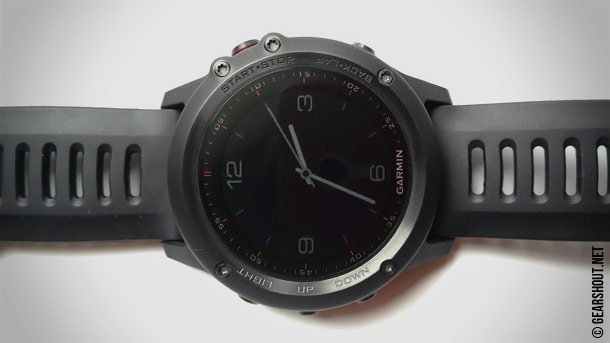
The color display is manufactured in compliance with the traditional Chroma technology, used for Garmin top-rated devices. Metal buttons move well and produce a clear distinctive click when pressed. The buttons’ positions are convenient; the main controls are smartly arranged and easy to access, no false operations when in service. At the right-hand edge of Fenix 3 there are openings for temperature sensor and pressure gage, and the rear panel allocates contacts for the charging device.
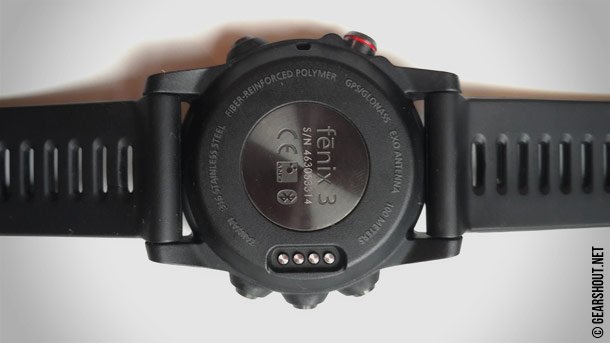
The standard complete set of Garmin Fenix 3 is provided with a broad silicon band that may be easily replaced with the original band of an optional color or with a special leather wristlet. The band is convenient in operation and securely fixes the watch on the wrist both when running and swimming. After the device dimensions had expanded, the watch became less comfortable for wearing on smaller wrists, but thanks to an excellent flexibility of the band fixtures the device is perfect for wider wrists.
Declared specifications:
- Dimensions: 2.0" × 2.0" × 0.6" (51.0 × 51.0 × 16.0 mm);
- Display: 1.2" (30.4 mm); resolution - 218 × 218 pixels; transflective MIP color;
- Weight: 2.9 oz (82 gr);
- Battery: 300 mAh lithium-ion accumulator; 50 hours max in UltraTrac mode; max 16 hours in GPS training mode; max 6 weeks in watch mode;
- Watertight: yes (up to 100 meters);
- Sensors: GPS/GLONASS, pressure altimeter, temperature indicator;
- Connectivity support: ANT+, Bluetooth Smart, Wi-Fi.
Unlike its predecessor, Garmin Fenix 3 may boast of a today’s fashionable function – physical activity monitoring – that we have already met in other Garmin devices. Connecting food diary and smart weighing scales to Garmin Connect you may use your day activity tracking for detailed control of your physical status. Many people still treat this feature as some kind of entertainment, but the users who monitor their nutrient timing (meal time) and track their weight successfully take advantage of this possibility.
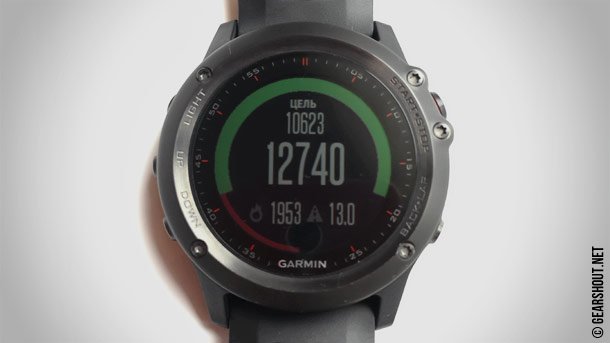
The new EXO antenna that supports satellite signal from both GPS and GLONASS systems really made me delightful. I had previously met this antenna in other devices but particularly in Fenix 3 its operability worked out at the highest level (it may relate to the upgraded firmware version). Throughout the time the watch was employed by me, the signal loss showed to be unessential and the satellite acquisition was prompt, just in rare cases the signal lag time was from one to five minutes, and this timing is claim-free. I'm uncertain if this factor refers to the firmware updates or to the device dimensions, but up to now Fenix 3 satellite response has been the best to my liking - in comparison with other resembling devices that I had used before.
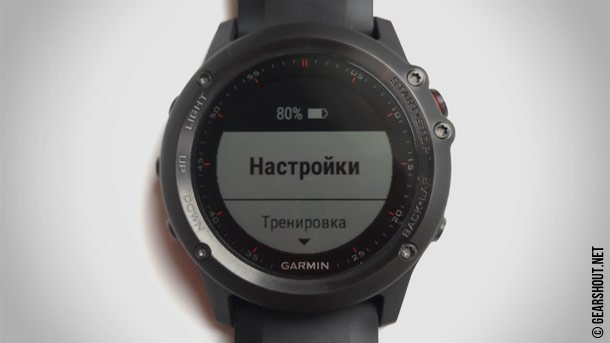
Since Garmin Fenix 3 watch pertains to the multisport grade, the number of functions it’s been provided with is much wider than that of single-purpose devices. In training menu you’ll get running, trail running, indoor running, cycling, indoor cycling fitness machine, open water swimming, pool swimming, walking, mountain skiing/snowboarding, cross-country skiing, rock climbing and triathlon. I employed Fenix 3 mostly during training and competitions on running and when swimming. The device overall serviceability in all these activities left a good impression on me, no fails or errors were encountered, all the indications were accurate, there were no software faults that had been said to take place before. One of the possible explanations here may be me having updated the firmware right after obtaining the device.
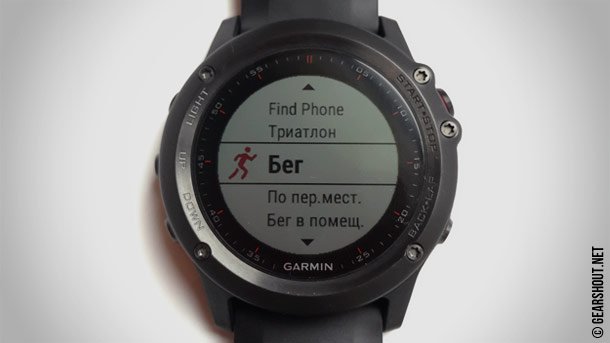
For "Running" mode Garmin Fenix 3 supports several versions of training, depending on the location (running, trail running, indoor running). To define the distance and speed for outdoor activity, the device employs the new EXO antenna, which supports satellite GPS and GLONASS signal receiving, while indoors all the measuring responsibility goes to the internal accelerometer.
The "Running" and "Trail running" modes differ in the displayed data and its composition on the screen. For instance, in the trail running mode Fenix 3 emphasizes climbs, displaying climbing time, distance and altitude; the screens shift automatically. The user is completely free to customize the data screens and their quantity: the watch is capable of representing up to four parameters at a time; the information on the screen is easy to percept – even when running fast one may read it without problems. As a matter of fact, customization and settings of the watch and displayed parameters are versatile in Garmin Fenix 3, I will specify it later, but it’s worth mentioning that apart from the types and amount of displayed data, it’s possible to adjust the screen color and automatic backlighting, and both functions are very helpful.
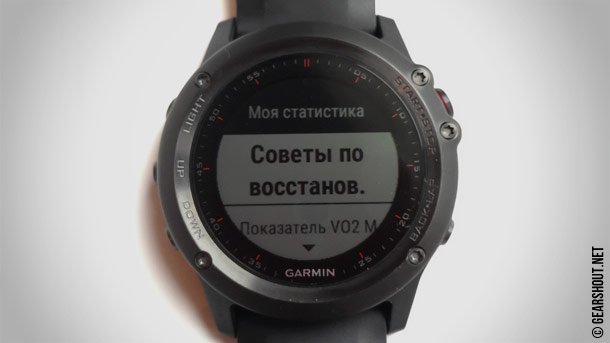
Garmin Fenix 3 is a powerful tool for analyzing running effectiveness, and if used paired with Garmin HRM-Run heart-rate monitor, it may output lots of useful additional info. Garmin Connect, in addition to the covered distance and running speed, displays the pace rate, pace length, vertical vibrations and time of the foot taction with the ground. All the data will be helpful for evaluation of the chosen running technique efficiency and general progress not only for professional sportsmen, but for advanced beginners as well. It’s good to know that nowadays for getting such a kind of data one needs just a simple user device, while previously it was available only to the professionals, and even then not to all of them.
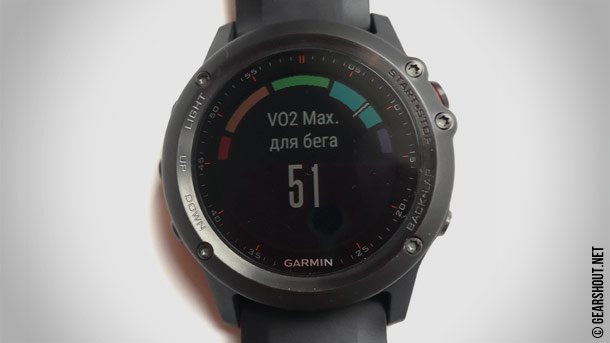
Another function of Garmin Fenix 3 is computation of VO2 oxygen max intake and time of recovery after exercise. This option reflects your training process effectiveness and general fitness status. As for the VO2 data trustworthiness, professional and amateur sportsmen argue much whether it's accurate, but nevertheless I’m inclined to consider that the displayed data is more or less correct, since its calculation procedure was performed by professionals, and Garmin in their turn always resort to the results of their labor.
When working out at swimming pools, I used standard mode of operation: I chose the pool length from the settings, pressed start and Garmin Fenix 3 performed its task. Neither innovation may be found here – distance counting, SWOLF effectiveness factor, stroke calculation – the full batch you need for performant training at a swimming pool. You may always use a wide range of your personal settings, intervals, notifications, etc., but I applied only the so to say "classical" operational mode. The new Garmin HRM-Tri and Garmin HRM-Swim bands will make excellent complementation to your workouts. The bands are capable of recording your pulse in water and after training, synchronize with your device and transfer data for its subsequent processing.
The only peculiarity that arrested my attention and somehow embarrassed me at the first pool workout was related to the dimensions. They are quite considerable and the item is rather thick, so when making strokes, I felt the watch presence on my wrist, specifically when the band was loose, and the watch extended away from the arm due to the water resistance, and for me it was a bit disappointing. But this is my personal opinion, since the described feature does not influence the device operability at all. Regretfully I didn't have a chance to try the device in the open water, but the Internet is full of reviews that examine Garmin Fenix 3 operation in the open water conditions and the EXO antenna performance.
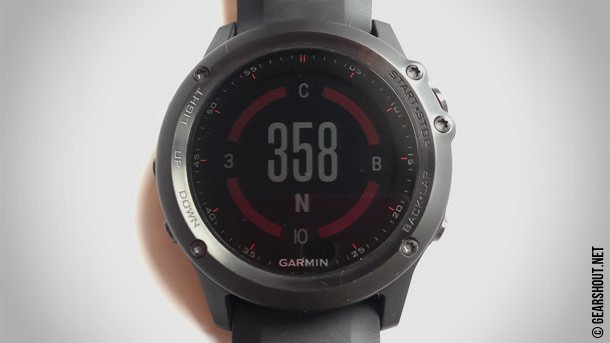
For those people who practice expeditions, forest hiking, gathering mushrooms and berries, the watch provides very useful functions of magnetic compass and route tracking with the subsequent return to the start point. When I used Fenix 3, I engaged the compass only two or three time just of mere curiosity; but I resorted to the route tracking when walking around unknown locations. It proved to be very convenient. Other operational modes are not interesting for me personally, but tourists and hunters, who like roaming about forests, will duly appreciate these functions without doubt.
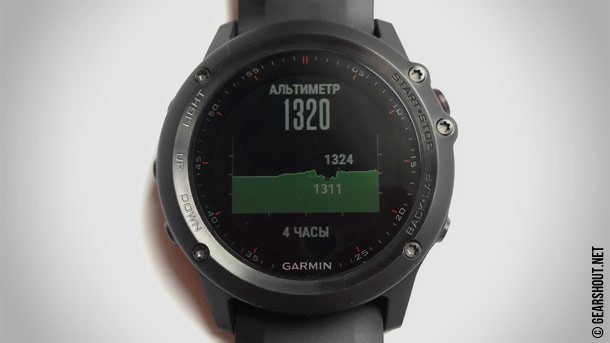
Before Fenix 3 I’ve never come across the "Strom Alert" function, which is on default activated in the watch. There’s nothing much to describe here: basing on the atmospheric pressure the watch alerts you on possible raining around one hour and a half in advance by vibration, sound and screen message. In my practice this mode activated only two times, both times correctly.
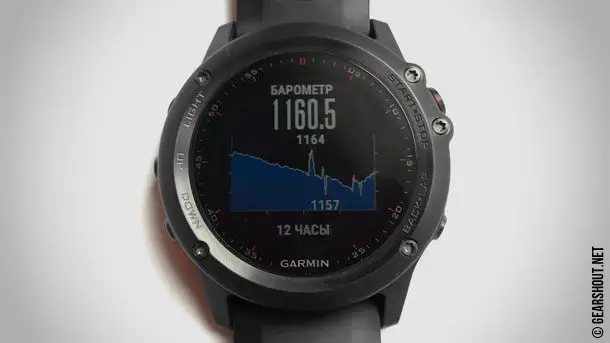
Garmin Fenix 3 is provided with quite a capacious storage battery of 300 mAh; it allows operability within a month in the watch mode; when using Bluetooth and continuous connection with a smartphone, the operational time will reduce up to one week. In training mode with GPS activated the watch was operable just within fifteen hours, and this is far from poor operability. If you activate UltraTrac mode, you’ll get almost two days of operation with GPS. And you’ll have to somehow sacrifice accuracy for autonomous operation. But to my mind, it’s of minor importance in most cases. If compared to other brands’ top devices operating in autonomous mode, this watch refers to the same grade and even superiors some of them, and it’s a definite advantage to choose this particular item.

Garmin Fenix 3 multisport watch has been created for a wide range of customers. No one can deny its rich functionality and technical execution, but it’s much subjective if everybody likes it or not. That’s when Garmin engineers provided the watch with personal features using a minor trick.

Today Garmin manufactures several versions of Fenix 3, which differ by body trimming and even sapphire lens availability, and to complete it up, there's an impressive set of bands for making your Fenix 3 more individual and harmonic when wearing it with shirts and even suits. When you need to alter the watch face, you solve the problem at the original Garmin IQ app store where you may choose a watch face for any occasion. And no matter who says what, but this small pleasure is a great advantage that serves as personal entertainment – you may not only install your favorite movie character on the screen, but also amend the watch exterior for an official occasion, and no one will even figure out that you’d covered two-three kilometers at the swimming pool this morning wearing this very watch
Garmin IQ is a unique modern platform that allows widening the watch functions and I try to mention this fact almost in every article. Sure the store can’t yet boast of a good selection of high quality and useful applications, but it’s barely a question of time and already a big step forward, which gives Garmin an advantage over competitors.
Despite the item being costly, Garmin’s engineers have succeeded to create a really top-quality product. And though it’s clear that it won’t become as popular as Forerunner 15, for example, but it demonstrates the company’s capabilities and development line. One may like or dislike modern, functional, smart and really reliable Garmin Fenix 3, but it won’t prevent the watch from being one of the best multisport watches at the present-day market.




